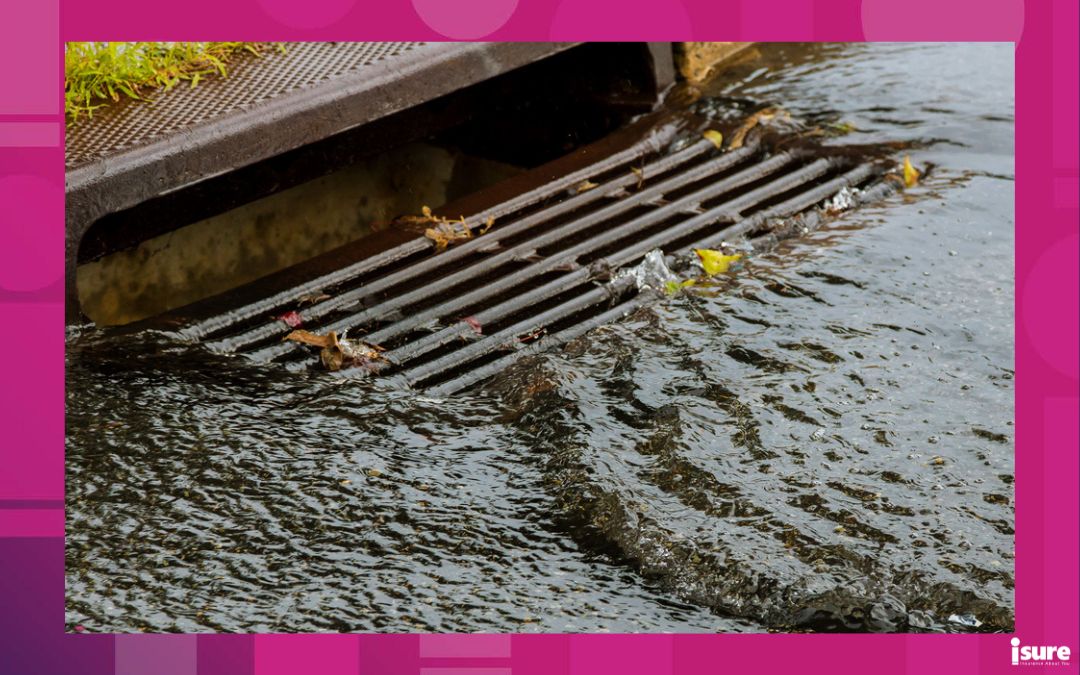Having sewage backing up your pipes into your home or basement is something most homeowners wouldn’t wish on their worst enemy. But it’s a problem that many people face. If you suspect you’ll need sewer backup insurance (SBU), we’ve compiled answers to some commonly asked questions so that you’ll know what you should do to manage it.
What is a sewer backup claim?
Sewer backup insurance is an extension to your regular home, tenant or condo insurance policy. This will pay for damages to your home done by, well, the sewer system backing up.
What to do when your sewer backs up
According to Puroclean.com, if sewage backs up into your basement, you should:
- Leave your home as soon as you can. The smell is awful and is toxic to your health. Do not attempt to enter the floodwater, especially with electrical outlets nearby.
- Don’t use any plumbing fixtures, such as sinks, bathtubs, or toilets, until you’ve called a plumber.
- Turn off the main power via the electrical panel, if you can.
- Contact your municipality to report the problem and to help determine its cause.
- Call a plumber (once it’s safe to do so) to install a sewer backup valve or backflow preventer to avoid this problem from happening in the future.
- Call your isure broker or home insurance provider to submit a claim and get the mess cleaned up as soon as possible. If you have a sewer backup endorsement on your insurance policy, it will take care of any repairs to your floor, carpets, furniture, baseboards, and drywall.
- Shut off the valve for the main water line of your home.
- Open windows or doors to let fresh air in and ventilate the area.
- Add some chlorine bleach to the standing water to help disinfect, if safe to do so.
How much does sewer backup insurance cost?
The average cost of adding sewer backup coverage to your insurance policy is between $150-$300 per year. Areas with high frequency of claims can pay as much as $700 yearly.
Do you need sewer backup coverage in a condo?
If you live in a condo, your condo insurance doesn’t automatically have this endorsement on your policy. The building insurance that you pay for through condo fees may cover a portion. However, if you’ve renovated beyond the “standard” or average, and the unit above has flushed something down they shouldn’t have, the excess will look for a place to escape. That escape can be your bathtub, sinks, and toilets, or whatever unit is just above the blockage. You should therefore consider the SBU endorsement on your policy.
What about basement apartments?
If you’re renting, tenant’s insurance protects your stuff and covers the cost for you to live elsewhere while the repairs are ongoing. However, without insurance, your landlord’s coverage doesn’t protect your belongings. A landlord’s insurance policy will repair the damage to the unit, but your valuables and the cost to live elsewhere are on you, the renter, to replace.
How much sewer backup coverage should I have?
Insurance companies each offer different levels of sewer backup insurane. It’s not uncommon for some insurers to charge a separate deductible and limit for sewer backup. We recommend the maximum amount of coverage you can get to the extent that you’re fully insured for a sewer backup event.
You can also use the online Intact estimator tool. Just input:
- Your location
- The square footage of your basement
- The portion (percentage or square footage) of your basement that’s finished, if any
- An estimated cost to replace your belongings
- An estimated cost to replace your upgrades (assume an unfinished basement as a base line)
This way, you can get an estimate of how much coverage you should purchase.
How can I prevent a sewage backup in my basement?
- Dispose of paper products properly. Flushing hygiene products, such as paper towels, diapers, or feminine products, down the toilet can easily clog your sewer line.
- Install a new plastic pipe or cut tree roots. To prevent tree roots from damaging your sewer line, replace it with a new plastic pipe. The roots may still need to be cut from time to time.
- Install a backwater prevention valve. This fixture allows sewage to leave, but prevents it from backing up into your home. Backwater valves are typically installed into a sewer line and sometimes into a drain line in the basement.
- Sewage pump maintenance. Ensure your sump pump is placed on a steady flat brick. Also, ensure the sump basin has a filter fabric around it to stop debris from coming in.
How much does sewer line insurance cost?
Sewer line insurance generally costs between $10 and $250 per year, depending on the amount of coverage you need. This is quite affordable relative to the protection you receive.
Is it worth getting water and sewer backup insurance?
Given the low cost of these services relative to what you’d pay for repairs, it’s absolutely worth it.
What happens if your sewer backs up?
If your sewer backs up and you don’t treat the issue promptly, water will end up overflowing from fixtures, such as your sinks, toilets, and other drains.
Does SBU insurance have a deductible?
Sewage backup insurance does typically come with a deductible. A $1,000 deductible is standard, but you can go higher if you feel confident in your ability to cover more than that.
If you’ve found yourself in the unfortunate position of having a sewer backup in your basement, don’t panic. While frustrating, there are things you can do to mitigate the damage. By having a sewer backup endorsement added to your home policy, it can offer some assurance that should the unthinkable happen, you and your belongings will be taken care of.




